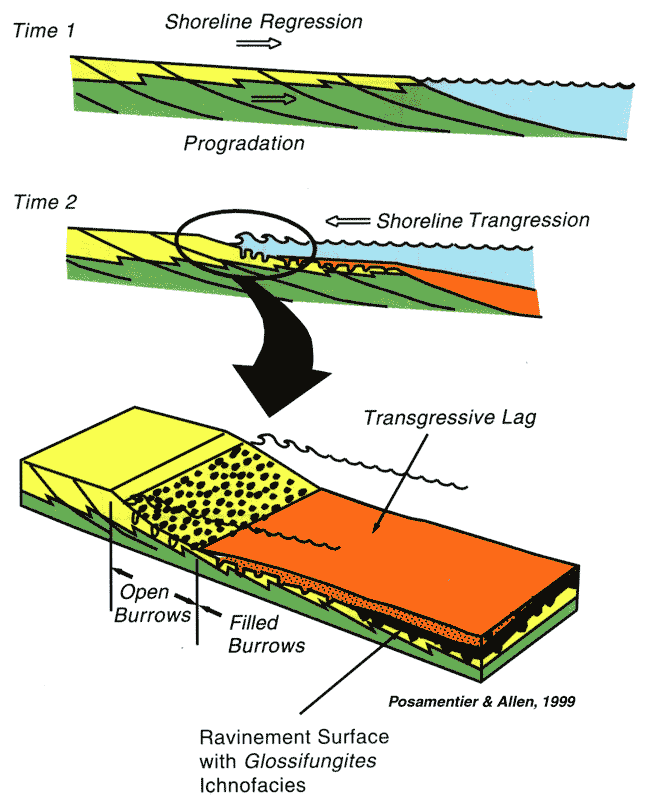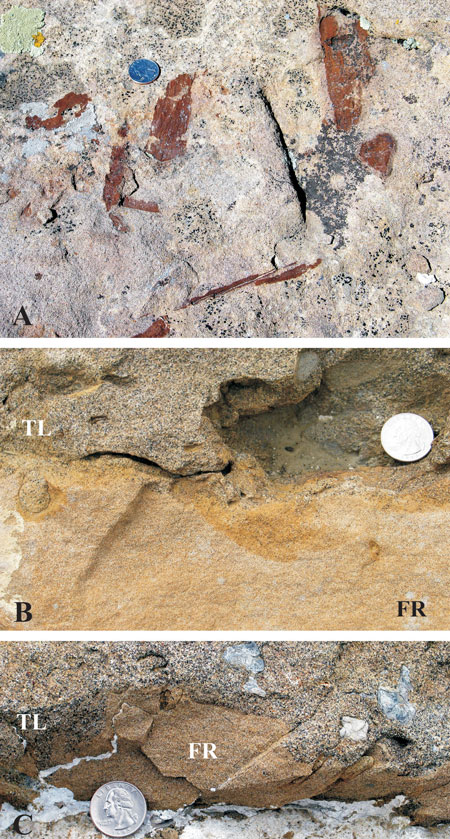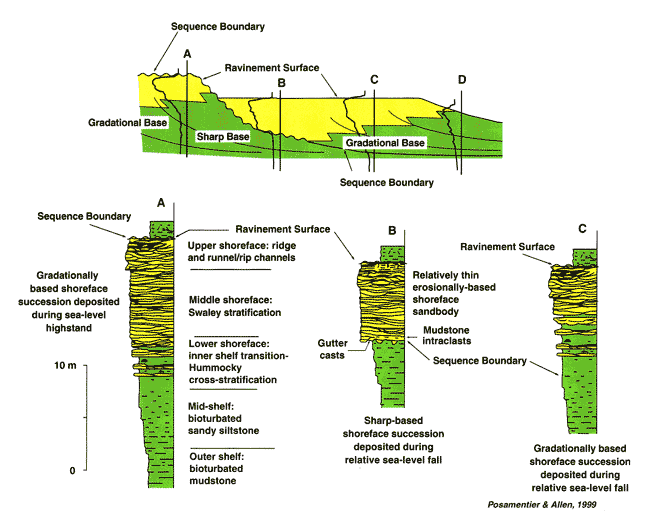|
glauconite
glossifungites
late lowstand systems tract
lowstand systems tract
regressive surface of erosion
transgressive surface
transgressive systems tract
ravinement erosion surface

|
As illustrated by Posamentier and Allen 1999 below, a transgressive lag may form on on a time transgressive or diachronous subaqueous erosional surface that results from wave ravinment in the nearshore setting where there is marine and shoreline erosion and the winnowing of the resulting lag.

Catuneanu 2006 in his textbook notes that these lag deposits are best seen in outcrops and cores. He illustrates these in his figure 4.50 below.

Figure 4.50 Catuneanu, 2006, ilustrates examples of transgressive lags from the Cretaceous of Utah.
Farrukh Qayyum in a personal communication contrasts these lags to completely different deposits that are winnowed and collect at the base of channels during falling sea level and are later covered with transgressive deposits. In this latter case the GR/NPHI log response exhibits dirtying upward trend with heavy minerals of channel fill and are not transgressive lags!
As Catuneanu points out some of these deposits are winnowed during the transgression and in this case do not form the system tract boundary. As explained here ravinement surfaces are commonly ascribed to the transgressive movement of the landward margin of the transgressive systems tract. However, as the attached movie shows, these erosional surfaces will tend to occur wherever the landward edge of the sea rises over an underlying sedimentary surface. Thus if the late lowstand systems tract has a subaerial landward margin it will have an updip ravinement surface associated with it. Farrukh Qayyum in a personal communication notes that these are different from the GR/NPHI log response that exhibits a dirtying upward trend with heavy minerals at the base of channels later filled with transgressive deposits.

In outcrops and wells ravinement surfaces are commonly equated with the transgressive surface. However, as the attached movie shows, these erosional surfaces are time transgressive and tend to occur wherever the landward edge of the sea rises over an underlying sedimentary surface. They only match the transgressive surface when it tops the shelf margin.
glossifungites burrows are formed during the development of this regressive surface of erosion and are often filled by the reworked sediments associated with the landward margin of following transgression and maximum flooding surface. In this later case Glauconitic sediments, gravels and sand sized grains are the common reworked sediments overlying this surface. The log response of ravinement often provides evidence of carbonate cementation. This ravinement surface is equated to the transgressive surface.

References
Catuneanu, Octavian (2006), "Principles of sequence stratigraphy", Elsevier, pp 375.
Posamentier, Henry W., and George P. Allen, 1999, "Siliciclastic Sequence Stratigraphy - Concepts and Applications", published by the Society of Economic Petrologists and Paleontologists, 216 pages.
|